Nội Dung Chính
- 1 SPEAKING Work in pairs. What do you think is the difference between immediate family and extended family? Which family members would you include in each group?
- 2 VOCABULARY Check the meaning of the phrases below. Choose three family member and describe your relationship with them.
- 3 Listen to a teenager, Katie, talking about her relationships. Correct the mistakes in this 'social circle' diagram.
- 4 Now listen again to Katie and three more teenagers. Choose the correct answers.
- 5 VOCABULARY Work in pairs. Check the meaning of the verbs below.
- 6 Listen to five dialogues. Choose a verb from exercise 5 and write down what is happening in each dialogue. Use the passive.
- 7 SPEAKING Work in pairs. Use verbs from exercise 5 to ask and answer questions about things that have happened to you.
(Page 12)
I can talk about relationships and describe behaviour.
| Unit map Vocabulary Relating to people Verbal interaction Connections Word Skills Phrasal verbs Grammar Negative structures Articles and quantifiers Listening Sibling rivalry
Pronunciation Features of fast speech Reading Power of connection
Speaking Photo description and comparison
Culture Vietnamese Family Day
Vocabulary Builder page 108 Grammar Builder and Reference pages 116-117 | 1 SPEAKING Work in pairs. What do you think is the difference between immediate family and extended family? Which family members would you include in each group?2 VOCABULARY Check the meaning of the phrases below. Choose three family member and describe your relationship with them.Relating to people admire adore be on the same wavelength (as) be (very) close (to) be wary of envy feel sorry for have a lot in common (with) have nothing in common (with) look down on look up to not see eye to eye (with) respect trust I don't always see eye to eye with my brother! I really look up to my grandfather.
|
(Page 13)
3 Listen to a teenager, Katie, talking about her relationships. Correct the mistakes in this 'social circle' diagram.
| 4 Now listen again to Katie and three more teenagers. Choose the correct answers.1 Katie has a lot in common with / doesn't see eye to eye with her cousin Tom. 2 Katie respects/has a lot in common with Mrs Saunders. 3 Ben admires/trusts his sister, Emma. 4 Ben looks down on /is a bit wary of his football coach. 5 Mark feels sorry for / looks up to his aunt Julia. 6 Mark doesn't always see eye to eye with / respect his brother. 7 Amy has nothing in common with / is on the same wavelength as her grandmother. 8 Amy is wary of /looks up to Mrs White. 5 VOCABULARY Work in pairs. Check the meaning of the verbs below.Verbal interaction compliment (sb on sth) flatter (sb) insult (sb) lecture (sb about sth) nag (sb about sth) offend (sb) praise (sb for sth) tease (sb about sth) tell (sb) off (for sth) warn (sb about sth)
6 Listen to five dialogues. Choose a verb from exercise 5 and write down what is happening in each dialogue. Use the passive.In dialogue 1, a man is being teased. 7 SPEAKING Work in pairs. Use verbs from exercise 5 to ask and answer questions about things that have happened to you.When was the last time you were told off at home? When was the last time that you were praised at school? |




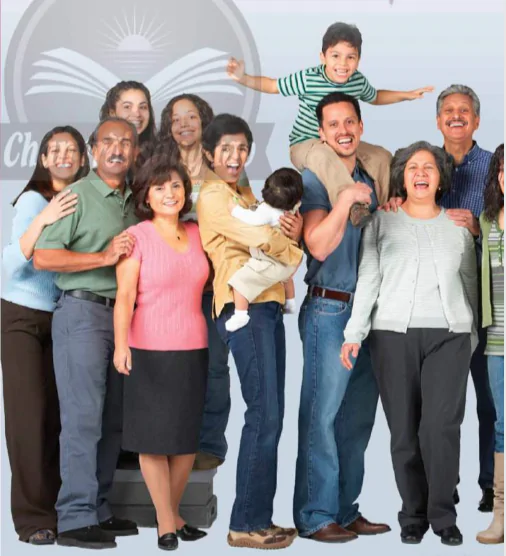
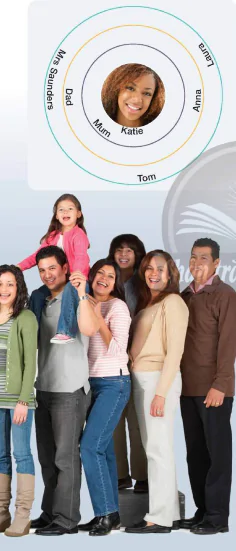
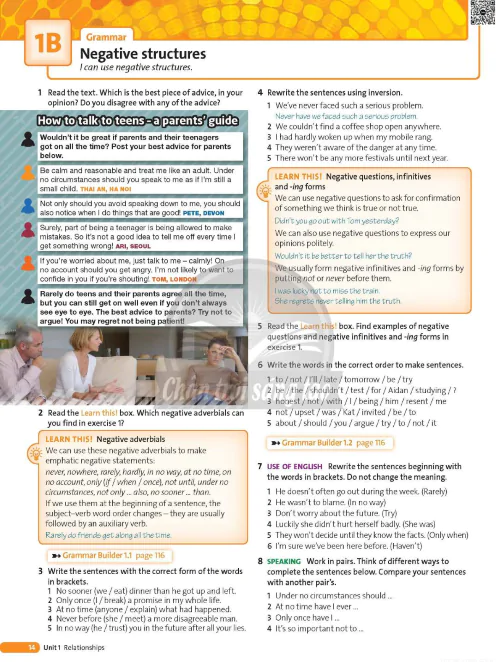
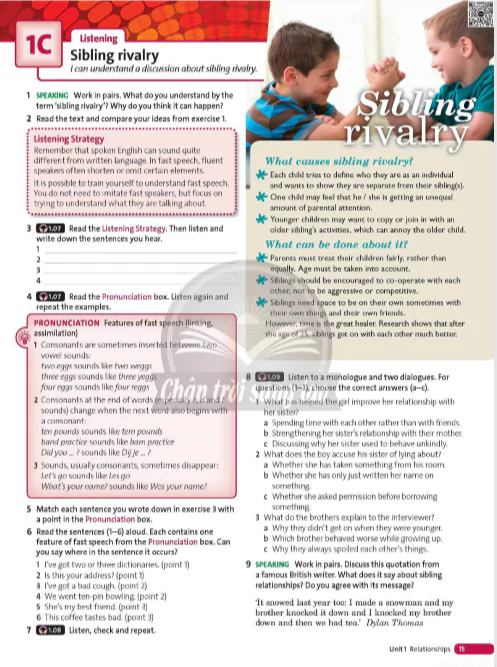
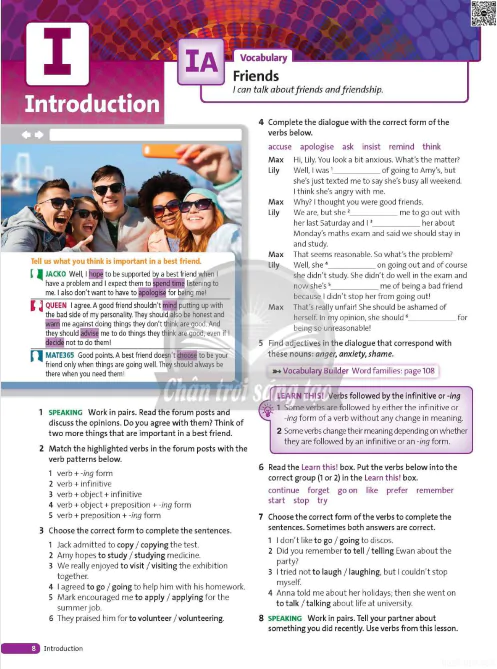
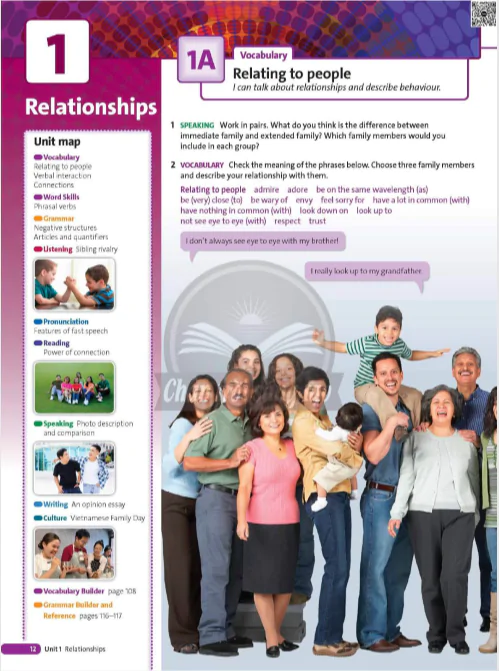
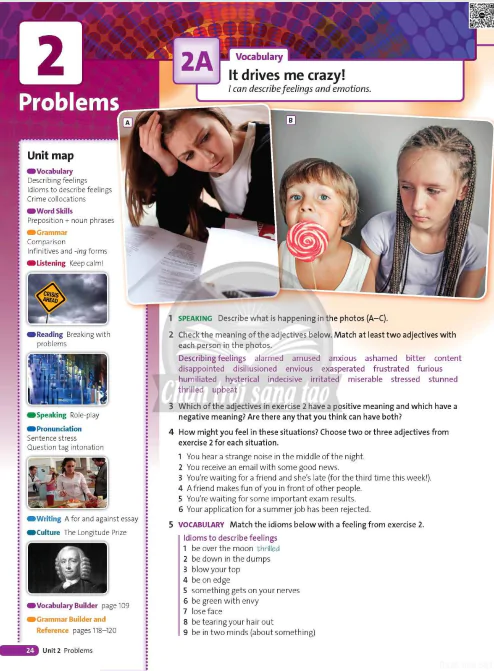
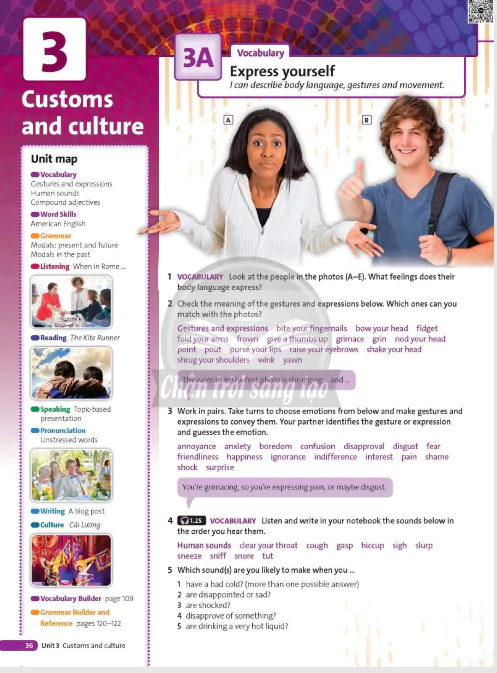
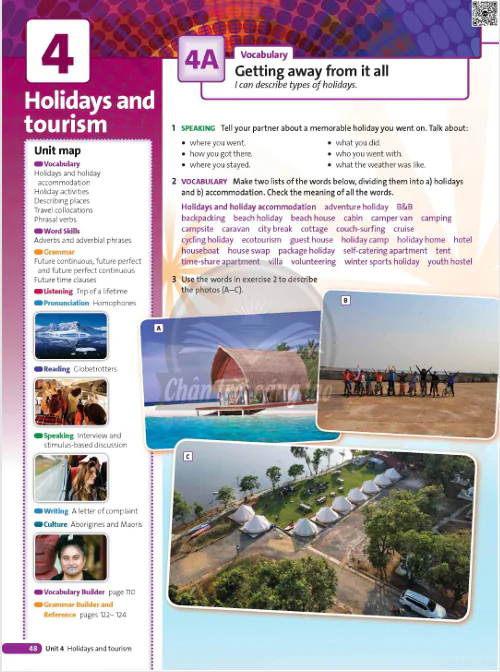
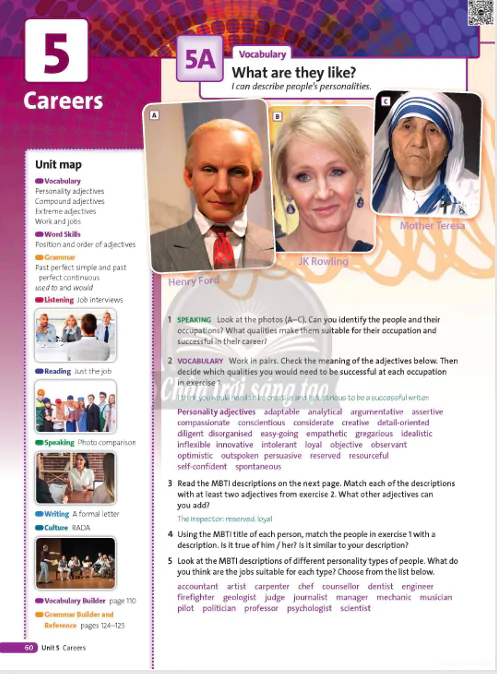



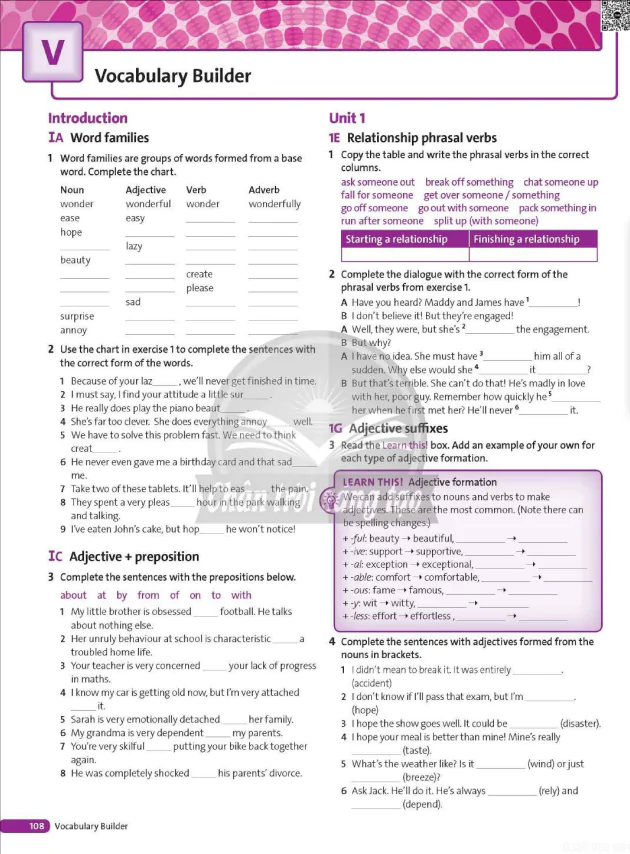
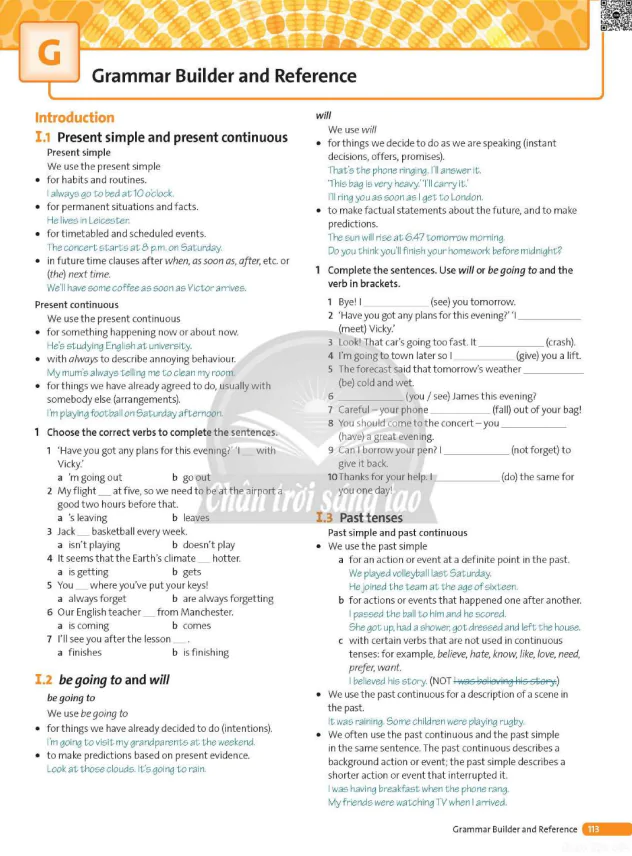


































Bình Luận
Để Lại Bình Luận Của Bạn